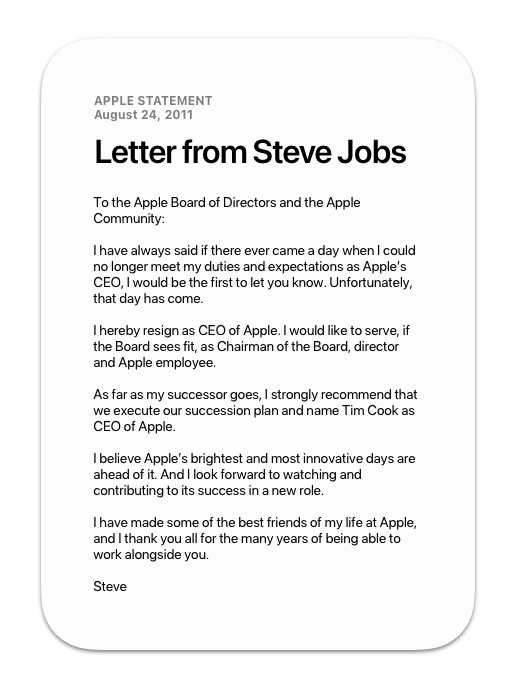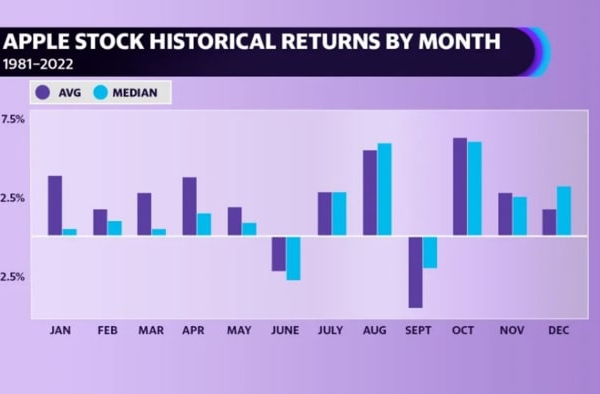
On August 24, 2011, the tech world stood still as Steve Jobs resigned from his position as Apple CEO, a decision that marked a pivotal moment in Apple history. As his health deteriorated due to pancreatic cancer, Jobs recognized that he could no longer fulfill his role at the helm of one of the most innovative companies in the world. In his heartfelt resignation letter, he expressed his dedication to the company he co-founded and recommended Tim Cook as his successor. This transition ushered in a new era for Apple, which had risen to prominence partly due to Jobs’ visionary leadership and groundbreaking products like the iPhone 4s. As the news of Jobs’ departure spread, it prompted reflection on his lasting impact and the future trajectory of Apple under Tim Cook’s guidance.
In a significant turn of events in the tech industry during August 2011, the visionary behind Apple, Steve Jobs, stepped down from his role as the leader of the company he built. This resignation was due to serious health complications, specifically his ongoing battle with cancer. Following his decision, Tim Cook was thrust into the role of chief executive, taking the reins at a time when Apple’s future seemed both bright and uncertain. Jobs had previously crafted a culture of innovation that had propelled Apple to unparalleled heights, particularly with products like the iPhone 4s. His transition to a chairman position signified both a shift in leadership and a commitment to contribute creatively even as he contended with his health challenges.
The Impact of Steve Jobs’ Resignation on Apple
Steve Jobs’ resignation as Apple CEO on August 24, 2011, marked a pivotal moment in the company’s history. His departure was not merely the end of an era for Apple, but it also ushered in a new chapter under Tim Cook’s leadership. Jobs had transformed Apple into a powerhouse of innovation and creativity, releasing groundbreaking products like the iPhone and iPad that forever changed the technology landscape. With Jobs stepping down due to his deteriorating health, the question rose: would Apple maintain its innovative edge without its visionary leader at the helm?
Cook’s ascension to CEO was met with apprehension from many in the tech community, who wondered how the absence of Jobs would affect Apple’s trajectory. However, Cook, who had been with Apple since 1998, was intimately familiar with the company’s operations and ethos. His operational expertise and focus on supply chain efficiency were crucial in ensuring Apple’s success, especially as it continued to roll out new products like the iPhone 4s, which became one of Apple’s best-selling devices, despite Jobs’ limited involvement in its development.
Frequently Asked Questions
What led to Steve Jobs’ resignation as Apple CEO in 2011?
Steve Jobs resigned from his position as Apple CEO on August 24, 2011, due to the progression of his pancreatic cancer, which had severely impacted his health. He acknowledged that he could no longer meet the duties and expectations of his role, prompting him to step down and recommend Tim Cook as his successor.
How did Tim Cook become Apple’s CEO after Steve Jobs’ resignation?
Following Steve Jobs’ resignation, the Apple board appointed Tim Cook as the company’s seventh CEO. Jobs formally recommended Cook during his resignation speech, indicating his confidence in Cook’s ability to lead Apple into the future.
What were Steve Jobs’ final contributions to Apple before his resignation?
In the lead-up to his resignation, Steve Jobs focused on foundational projects like the iPhone 4s, which featured Siri as its voice assistant. Although he stepped down as CEO, Jobs intended to continue contributing to Apple in a chairman capacity, working on innovative concepts and research.
What impact did Steve Jobs’ resignation have on Apple’s leadership?
Steve Jobs’ resignation marked a significant transition for Apple’s leadership, as it saw the shift from Jobs’ visionary guidance to Tim Cook’s operational expertise. Cook’s leadership style brought a different focus to Apple’s business strategy, building on the strong foundation that Jobs had established.
How did Steve Jobs inform the Apple board of his resignation?
Steve Jobs opted to announce his resignation during a routine Apple board meeting rather than calling a special meeting. This decision highlighted his deep commitment to the company, exemplified by his presence at the meeting despite requiring a wheelchair due to his health condition.
What was Steve Jobs’ role following his resignation as Apple CEO?
After resigning as CEO, Steve Jobs took on the role of chairman of the board at Apple. Although his health was declining, he remained involved in guiding innovative projects and offering insights until his passing on October 5, 2011.
What did Steve Jobs express about his health in his resignation letter?
In his resignation letter, Steve Jobs stated, “Unfortunately, that day has come,” indicating that he could no longer fulfill the responsibilities expected of him as Apple’s CEO due to his deteriorating health.
How did the tech world react to Steve Jobs’ resignation as Apple CEO?
Steve Jobs’ resignation was met with shock and concern across the tech industry. Many recognized his immense influence on Apple and the importance of his leadership in shaping the company’s innovative direction, making the transition to Tim Cook a significant moment in Apple history.
| Key Point | Details |
|---|---|
| Steve Jobs Resignation | On August 24, 2011, Steve Jobs resigned from his role as Apple’s CEO due to deteriorating health from pancreatic cancer. |
| Appointment of Tim Cook | Tim Cook was appointed as Apple’s new CEO after Jobs’ resignation, recommended directly by Jobs. |
| Resignation Letter | Jobs informed the board in a straightforward resignation letter, emphasizing his inability to meet expectations. |
| Board Meeting | Jobs resigned during a routine board meeting, requiring a wheelchair to attend, highlighting the severity of his health. |
| Post-Resignation Role | Despite resigning, Jobs expressed his desire to continue contributing to Apple as chairman of the board. |
| Significant Contributions | Jobs was known for his innovative vision and leadership that significantly shaped Apple’s trajectory. |
| iPhone 4s Project | One of Jobs’ last projects was the iPhone 4s, launched shortly before his resignation. |
Summary
Steve Jobs’ resignation marked a pivotal moment in the tech industry. On August 24, 2011, Jobs stepped down as the CEO of Apple, citing serious health issues and the progression of his cancer. Despite the challenging circumstances, his legacy continues to influence Apple’s culture and innovation. As Tim Cook took over as CEO, Jobs remained a guiding figure through his new role as chairman, allowing him to impart his vision while addressing his health concerns. This transition was not just a change in leadership; it symbolized the continuation of Jobs’ remarkable impact on technology and design.
You may also like

iOS App Store Success: A Milestone in Digital Distribution


First Email from Space: The Macintosh Portable’s Legacy
Archives
Calendar
| M | T | W | T | F | S | S |
|---|---|---|---|---|---|---|
| 1 | 2 | 3 | 4 | |||
| 5 | 6 | 7 | 8 | 9 | 10 | 11 |
| 12 | 13 | 14 | 15 | 16 | 17 | 18 |
| 19 | 20 | 21 | 22 | 23 | 24 | 25 |
| 26 | 27 | 28 | 29 | 30 | 31 | |